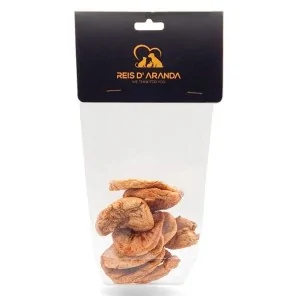The Tornjak originated from genetically homogeneous, almost extinct, indigenous shepherd dogs. These dogs have...
LETHAL GENES ASSOCIATED WITH COLOURS IN DOMESTIC RATS
INTRODUCTION
The wide variety of colours that we can find in domestic rats is amazing, as we have seen, but behind some of these beautiful and original colours can hide complicated genes that, if misused, can become a danger to our breeding line. These genes are known as "lethal genes".
These genes are usually associated with specific colours (we will see some of them below) and, in some cases, with the sex itself. What can we do to prevent them? As they are linked to certain colours, we have to be very clear about the colours we want to breed and, if we are one of the ones carrying these genes, we have to be prepared and learn as much as possible about them.
DISEASES ASSOCIATED WITH COLOUR GENES
-PEARL MERLE: The "pearl merle" gene is dominant and, if it is duplicated in an embryo, it will be non-viable and will be reabsorbed in the uterus. Unlike what happens in dogs with the "merla" gene (which, in duplicate, causes severe health problems in dogs), in litters of "pearl merle" rats we will not see this type of consequence, only that they are smaller in number due to the possible reabsorptions.
-SILVERMANE: Although it is not 100% confirmed that the "silvermane" gene is lethal, there are strong suspicions that the same thing happens to it as to the "pearl merle".
-AMERICAN BLUE: The colour "american blue" cannot be considered "lethal" like "pearl merle" or "silvermane", but it has been reported that several lines (related or not) of this type of colour have been affected by recurrent cases of important blood coagulation problems, which produce important haemorrhages that can lead to the death of the rat.
-BEW-ASSOCIATED MEGACOLON: In genetic megacolon, the smooth muscles of the colon are damaged, which may affect a fragment of the colon or the entire colon. If a segment is involved, it is narrowed, stenotic (it is stationary or almost stationary) and permanently contracted, while the intestine proximal to that segment is hypertrophied and dilated. The sphincter does not relax, it contracts constantly and, as a result, the faeces cannot pass and the intestine dilates, the abdomen bulges and the pressure increases, gradually reducing the amount of blood flowing through the area, deteriorating the mucosal barrier. When this happens, because the stool cannot be excreted and is 'stuck', 'stasis' occurs and the usual bacteria in the gut begin to grow uncontrollably, leading to intestinal rupture and sepsis (generalised infection).
This can occur early (soon after the animal starts eating solid food) or late, there is no solution and the best option is to euthanise the animal and not allow it to continue progressing through the different stages, which would only bring suffering.
THE IMPORTANCE OF GOOD SELECTION
As we can see, the selection of colours and colour patterns when breeding is important, but not only in rats, but in any type of animal; this selection is not carried out by the "pseudo backyard breeders" nor by the big pet factories, who only look for economic profit and not for health (physical and mental) and proper morphology.
CONCLUSION
Bad selection does not only focus on colour issues, but also on various physical problems which we can read about in the article "THE IMPORTANCE OF GENETIC SELECTION IN RATS".
Leave a comment
Log in to post comments
















